Pumpkin Seeds: The Real Deal on Using (Not Wasting) Them
I used to work in nutrition, and I’d watch people do the same thing over and over. They’d carve a pumpkin or roast a squash, scoop out all the gorgeous insides, and then scrape the seeds and pulp straight into the compost. Every single time. It was like watching someone toss a handful of treasure in the trash.
In this article
- Fresh vs. Store-Bought: What’s the Difference?
- What’s Actually Inside These Little Seeds?
- How to Prep Them Like a Pro (Without the Headaches)
- The Art of Roasting: Flavor Without Destruction
- So, What Do They Actually Do For Your Health?
- Beyond the Snack Bowl
- The Fine Print: A Final Word of Advice
- Inspirational Gallery
It made me realize that most of us think of these seeds as gooey leftovers, not the little nutritional powerhouses they actually are. That’s what got me really interested in figuring out the best way to use them. This isn’t about some miracle ‘superfood’ that’ll fix everything overnight. Honestly, it’s just about understanding a simple, whole food and making it a regular part of how you eat.
Fresh vs. Store-Bought: What’s the Difference?
Okay, first things first. The seeds you scoop from a Halloween pumpkin are not the same as the little green seeds you buy in a bag at the store. Knowing the difference is key.

When you carve that classic orange pumpkin, you get seeds with a tough, whitish-yellow shell. Here’s the big question people always have: can you eat that shell? Absolutely. When you roast them, the whole thing gets enjoyably crunchy, but be warned—that shell is very fibrous. The good stuff, the tender green kernel, is hiding inside.
Then you have the store-bought version, often called pepitas. These are small, flat, green seeds that come from special pumpkin varieties grown specifically because their seeds don’t have that tough outer shell. They are much more tender and have a delicate, nutty flavor right out of the bag.
So, which should you use? It really boils down to time versus money. You can get a couple of cups of seeds from a single $5 pumpkin, but you have to put in the work to clean and prep them. Or, you can buy a bag of ready-to-use raw pepitas for about $7 to $10. You’re basically trading about 20 minutes of prep time for a few extra bucks.
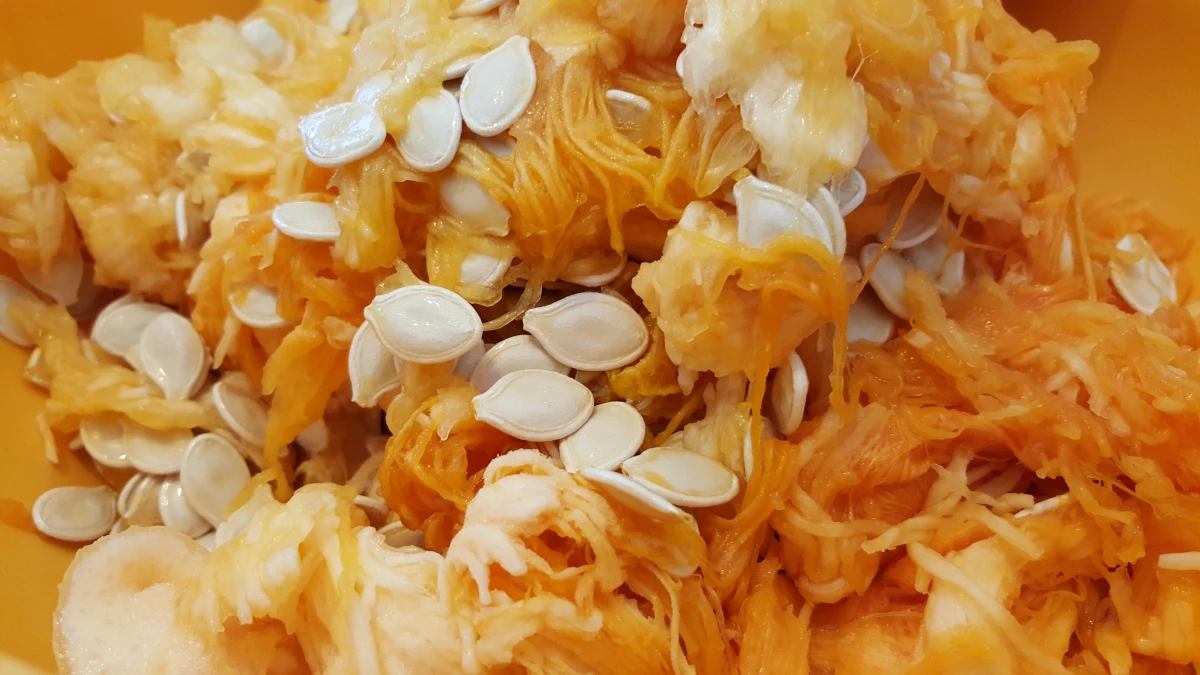
What’s Actually Inside These Little Seeds?
So why bother with them at all? It’s what’s packed inside that counts. A standard one-ounce serving, which is about a 1/4 cup, is a pretty good baseline.
- Magnesium: This is the unsung hero. A single serving can give you almost half the magnesium you need for the day. Think of magnesium as a master key for your body’s engine—it’s involved in hundreds of processes, from controlling blood pressure and building bones to regulating nerve function. If you ever get muscle cramps or feel constantly fatigued, low magnesium could be a factor.
- Zinc: Another major player, zinc is crucial for a healthy immune system and helps your body heal wounds. It’s also important for basic cell repair and growth.
- Healthy Fats: Pumpkin seeds are full of the good kinds of fat, particularly plant-based omega-3s. These aren’t the fats to be afraid of; your body needs them to reduce inflammation and support brain health. The trick, which we’ll get to, is not destroying them with high heat.
- Antioxidants: These seeds have a nice mix of antioxidants like vitamin E. They act like your body’s personal defense squad, protecting your cells from damage caused by stress, pollution, and just… life.
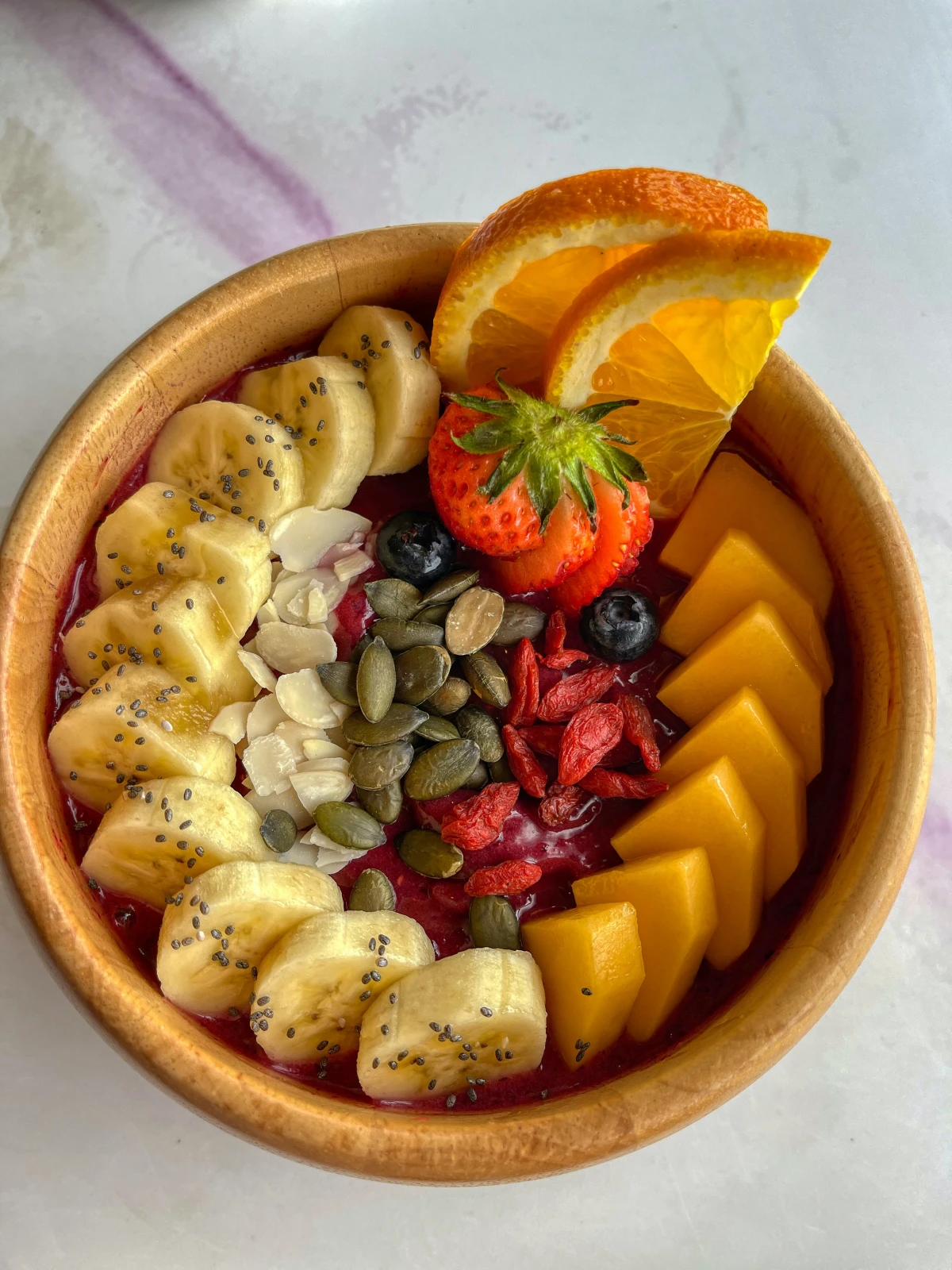
How to Prep Them Like a Pro (Without the Headaches)
How you prepare pumpkin seeds really matters. You can definitely eat them raw, but a few simple steps can make them tastier, crunchier, and even easier for your body to use.
For Fresh-from-the-Pumpkin Seeds:
Step 1: Clean Them the Easy Way
Don’t sit there picking seeds from the stringy pulp one by one. Here’s a game-changing trick: dump the whole glob of seeds and pulp into a big bowl of water. Swish it all around with your hands. The seeds will float to the top, and the heavier pulp will sink. Just skim the clean seeds right off the surface, give them a quick rinse in a colander, and you’re done in two minutes.
Step 2: To Soak or Not to Soak?
This is a step many people skip, but I recommend it, especially if you have a sensitive stomach. Raw seeds contain something called phytic acid, which can make it harder for your body to absorb all those great minerals like zinc and magnesium. Soaking helps neutralize it. Just cover the seeds in a bowl with water and a teaspoon of salt. Let them sit on the counter for at least 8 hours or overnight. Then, drain, rinse, and—this is critical—pat them as dry as you possibly can with a towel before roasting. Wet seeds will steam, not roast, and you’ll end up with a chewy mess.
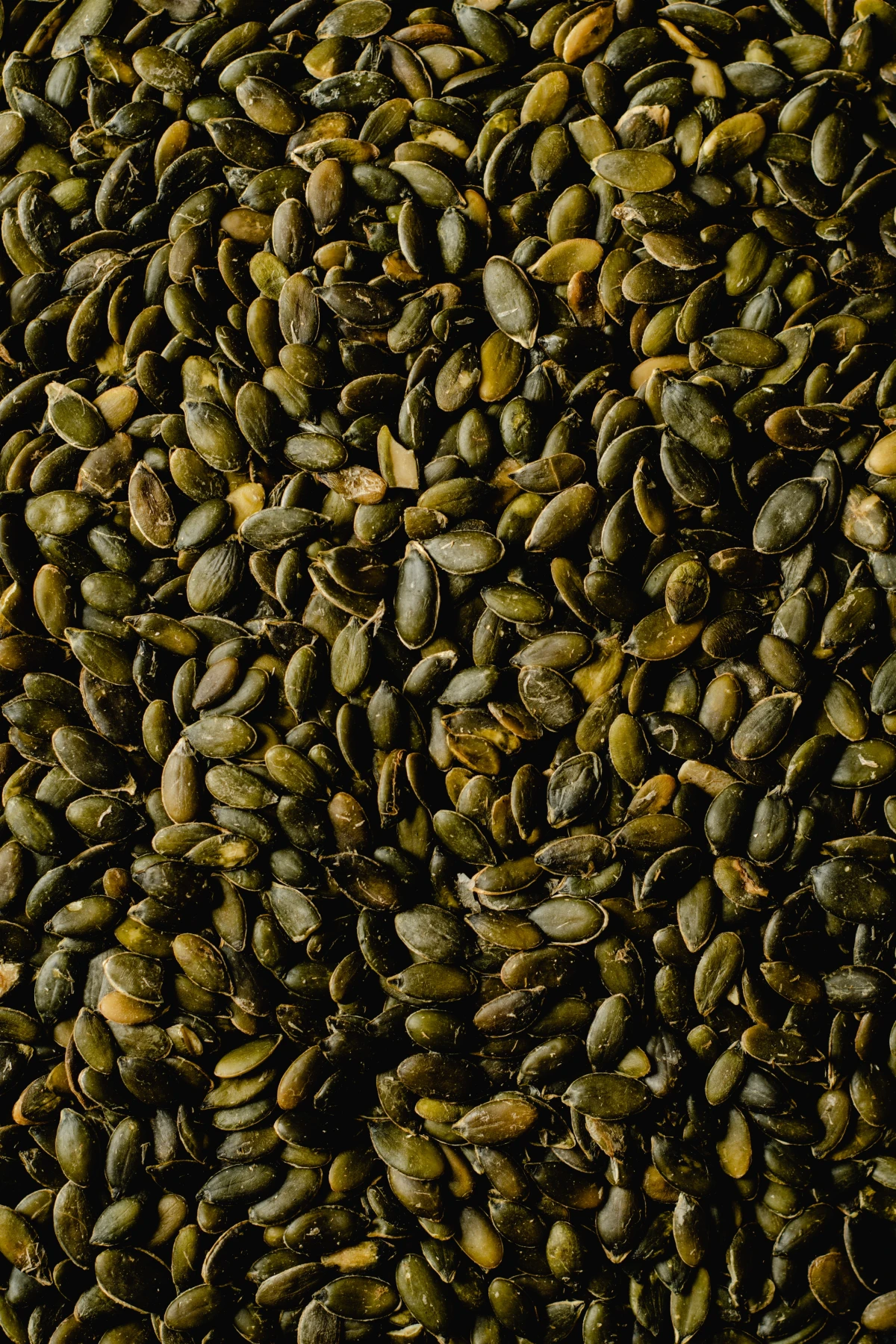
For Store-Bought Raw Pepitas:
Good news! If you bought a bag of the green, shell-less pepitas, the process is way simpler. Since they don’t have the tough outer hull and are generally cleaner, you can usually skip the heavy-duty cleaning and soaking. You can toast them straight away to bring out their nutty flavor.
The Art of Roasting: Flavor Without Destruction
The single biggest mistake people make is blasting their seeds with high heat. Those healthy fats we talked about are delicate. Roasting above 350°F (175°C) can damage them, making them taste bitter and destroying the nutrients. Low and slow is the only way to go.
- The Right Temp: Set your oven to a gentle 300°F (150°C).
- Prep the Pan: Spread the dry seeds in a single, even layer on a baking sheet. You can toss them in a tiny bit of oil (avocado is great for this), but it’s optional.
- Time for Flavor: Now for the fun part. Instead of just salt, try a savory blend of smoked paprika, garlic powder, and a pinch of cumin. Or, for a sweet version, wait until after they come out of the oven, and while they’re still warm, toss them with a mix of cinnamon and a tiny bit of coconut sugar.
- Roast and Listen: Bake for about 15-20 minutes, stirring them halfway through. They should be a light golden brown and smell fragrant and nutty.
Quick Tip: Let them cool completely on the baking sheet! They get their final, satisfying crunch as they cool down. If your seeds are chewy, it’s either because they weren’t dry enough to start or you didn’t let them cool.
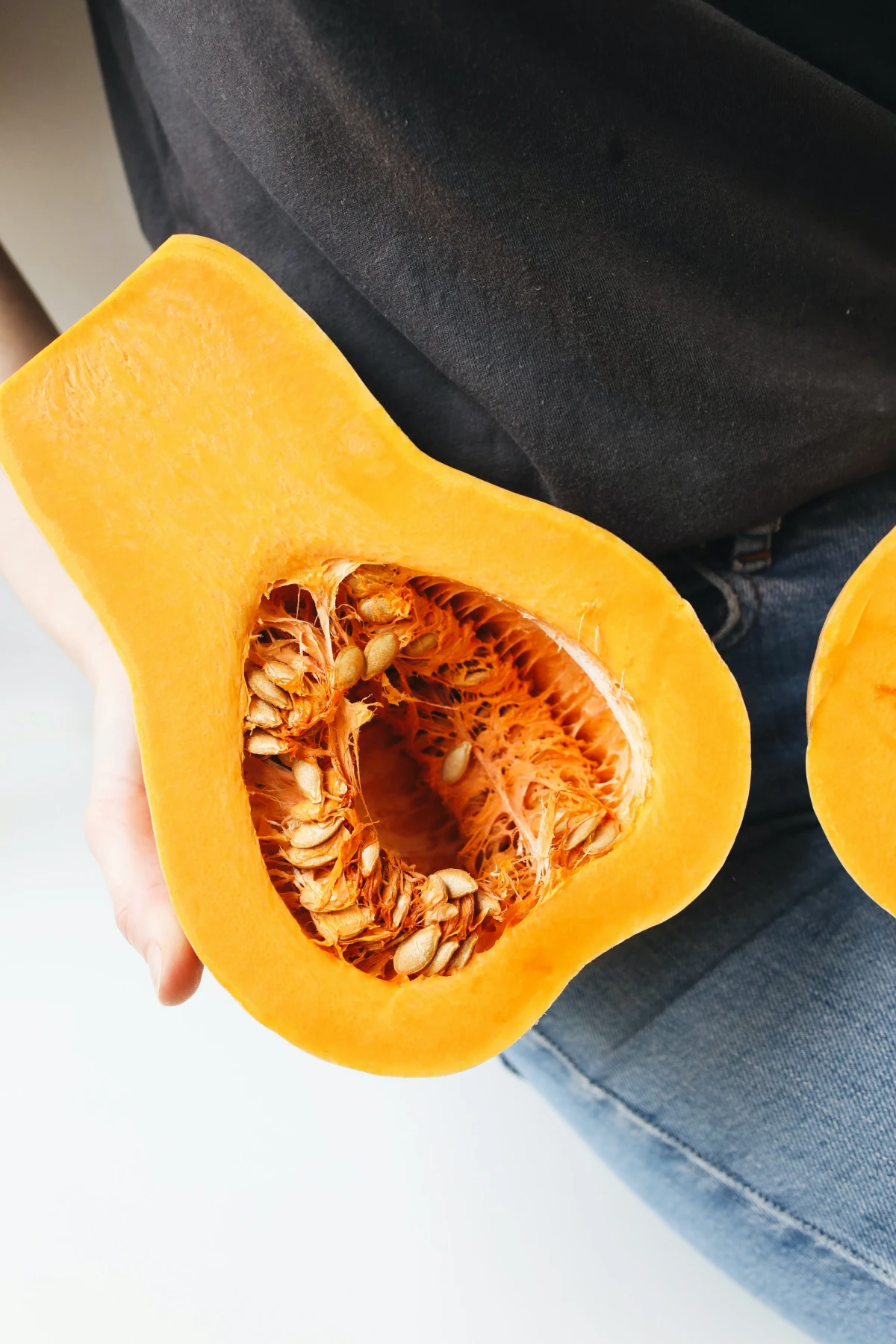
Store your roasted seeds in an airtight container. They’re good for a week or two on the counter, but I prefer to keep them in the fridge to protect the oils from going rancid.
So, What Do They Actually Do For Your Health?
Let’s be realistic. Sprinkling some seeds on your salad isn’t a cure-all, but they can be a powerful part of a balanced diet.
The magnesium and healthy fats are fantastic for heart health, helping to manage blood pressure and cholesterol. For blood sugar control, the fiber and fat slow down digestion, which helps prevent those sharp energy spikes and crashes after a meal. This makes them a great addition for anyone keeping an eye on their glucose levels.
You’ll also hear a lot about them being good for prostate and bladder health. This is one of their most well-known traditional uses, largely thanks to their high zinc content. While some studies on concentrated pumpkin seed oil show promise, eating the whole seeds is more of a supportive habit than a treatment. If you have any health concerns in that area, please talk to a doctor.

Oh yeah, and what about sleep? You might read that they help you sleep because of an amino acid they contain. But to get a noticeable effect, you’d have to eat a truly ridiculous amount—we’re talking over 1,000 calories worth! A more practical approach is to have a small handful with something like a small apple about an hour before bed. It’s a supportive habit, not a sleeping pill.
Beyond the Snack Bowl
Once you get the hang of them, you can do more than just snack on them. In some parts of Europe, a special pumpkin is grown to produce an incredible dark green finishing oil. It’s so nutty and rich; people drizzle it over everything from salads to vanilla ice cream. (Heads up: never cook with it—the heat would ruin its flavor.)
In traditional Latin American cooking, toasted pepitas are ground up to create rich, creamy sauces. They form the heart of the entire dish, giving it a depth and earthiness you can’t get any other way. In your own kitchen, you can blend roasted seeds into a homemade seed butter or grind them into a coarse flour to add a protein boost to gluten-free baked goods.
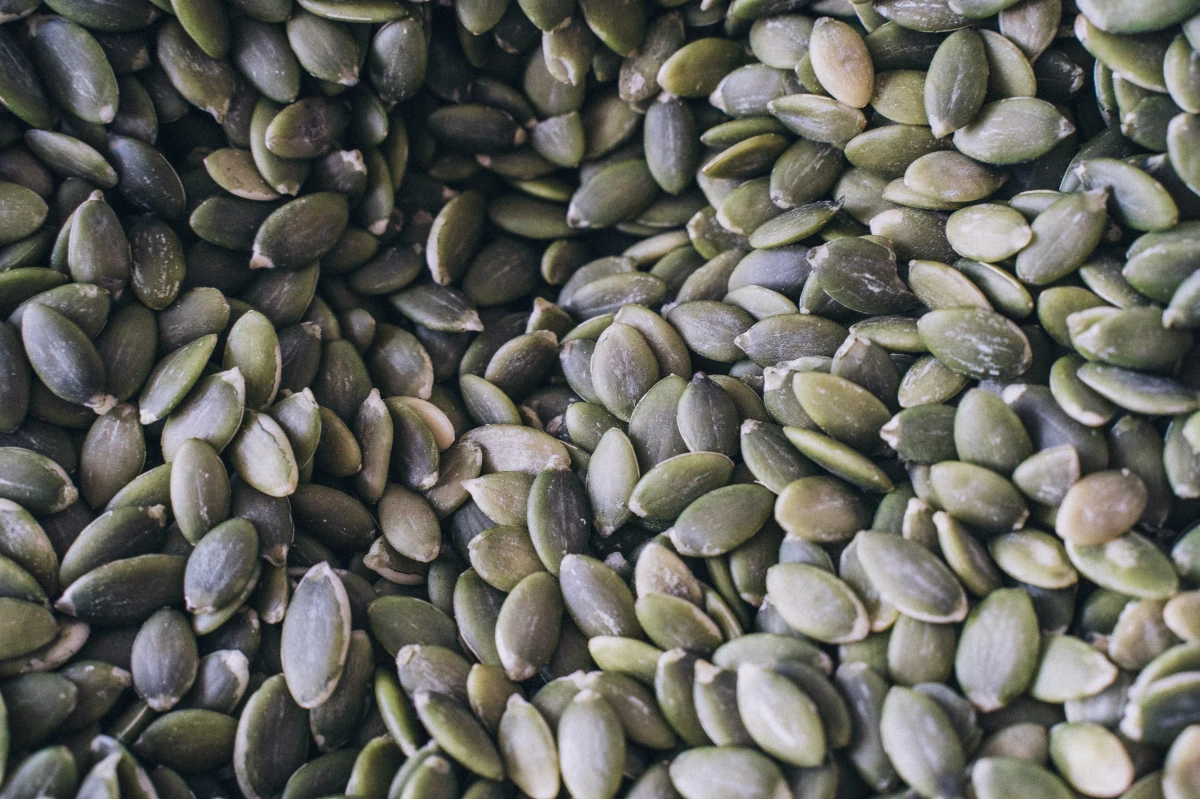
The Fine Print: A Final Word of Advice
Pumpkin seeds are amazing, but they are also high in calories (about 160 per ounce). It’s super easy to overdo it, so I always recommend portioning them out instead of eating straight from the bag. A small handful is a great serving size.
And of course, while seed allergies aren’t as common as nut allergies, they do exist. Be mindful if you have other seed sensitivities.
Feeling a bit overwhelmed by all this? Here’s your quick win: Go to the store and buy a small bag of pre-roasted, salted pepitas. The next time you make a salad, use a tablespoon of them instead of croutons. Done. You’ve just added a ton of nutrients and a great crunch with zero effort.
At the end of the day, that’s what this is all about—turning something you might have thrown away into a simple, delicious, and genuinely helpful part of your life.
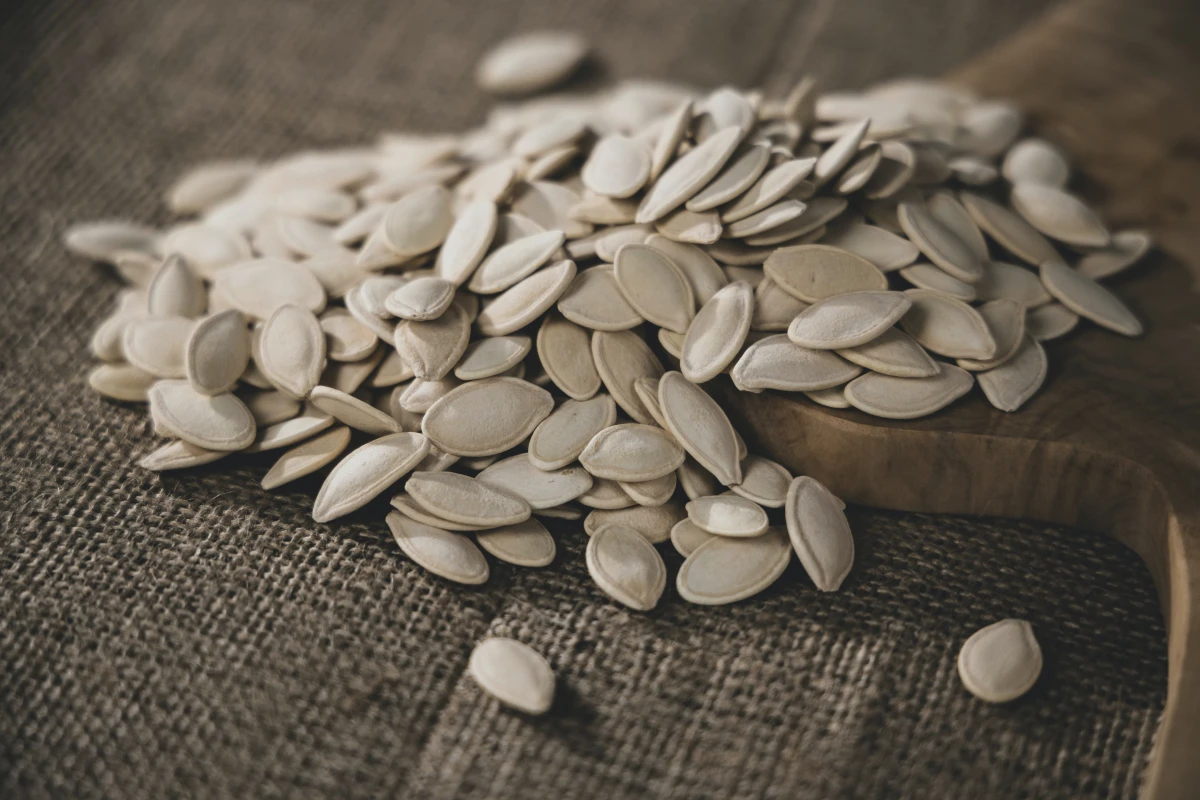
Inspirational Gallery
Sweet Treat: Toss clean, dry seeds with melted coconut oil, a sprinkle of cinnamon, and a dash of maple syrup before roasting. The result is a crunchy, granola-like snack perfect for yogurt.
Savory Bite: For a more classic approach, use a high-quality olive oil, then season generously with smoked paprika, garlic powder, and a pinch of cayenne for a subtle kick. Perfect for salads or soups.
Both methods follow the same roasting time and temperature—the flavor journey is up to you.
The famous dark green pumpkin seed oil from Styria, Austria, is made from a special variety of pumpkin whose seeds naturally grow without a tough, white shell.
For a perfect roast every time, follow this checklist:
- Dry them completely! Wet seeds will steam, not roast, resulting in a chewy texture. Pat them dry or let them air-dry overnight.
- Don’t overcrowd the pan. A single, even layer on your baking sheet ensures every seed gets crispy.
- Roast low and slow. About 300°F (150°C) is ideal to toast them evenly without burning the delicate oils, which can make them taste bitter.
That stringy pulp clinging to the seeds… is it just waste?
Not at all! While many people discard it, that ‘pumpkin goo’ is perfectly edible and full of flavor. You can boil it down with some vegetable scraps (like onion ends and carrot peels) to make a light, flavorful pumpkin broth for soups and risottos. Just strain it well before using. It’s a simple step to getting the absolute most out of your pumpkin.
According to the National Institutes of Health, nearly half of the US population consumes less than the required amount of magnesium.
This is where pumpkin seeds truly shine. As the article mentions, they are packed with magnesium, which is crucial for muscle function, nerve health, and blood sugar control. Making roasted pumpkin seeds a regular snack is an easy, delicious way to help bridge that common nutritional gap.
Think of pumpkin seeds as edible texture. Beyond flavor, their greatest contribution to a dish is a satisfying crunch. A sprinkle of toasted pepitas over a creamy butternut squash soup or a simple arugula salad adds a necessary contrast that elevates the entire eating experience. It’s a small detail that chefs use to add a professional, multi-layered finish to a seemingly simple plate.
- A creamy, rich spread for toast or apple slices.
- A nutrient-dense base for energy balls and smoothies.
- A surprising, nutty alternative to peanut butter.
The secret? Homemade pumpkin seed butter. Simply blend roasted, unsalted pepitas in a high-speed blender like a Vitamix with a pinch of salt until smooth and creamy. It takes patience as it goes from powder to a thick paste, but the delicious result is well worth it.
The enemy of a good crunch: air and moisture. To keep your perfectly roasted seeds crisp for weeks, allow them to cool completely on the baking sheet before transferring them to an airtight container. A glass jar with a tight-fitting lid is ideal. Store them in a cool, dark cupboard to protect the delicate oils from going rancid.
In Mexico, pepitas are far more than just a snack; they are a foundational ingredient. They are the star of pipián, or mole verde, a pre-Hispanic sauce where toasted and ground pepitas create a uniquely rich, thick, and earthy base. Often blended with tomatillos, cilantro, and chiles, it shows how these humble seeds can form the very soul of a complex and celebrated dish.










